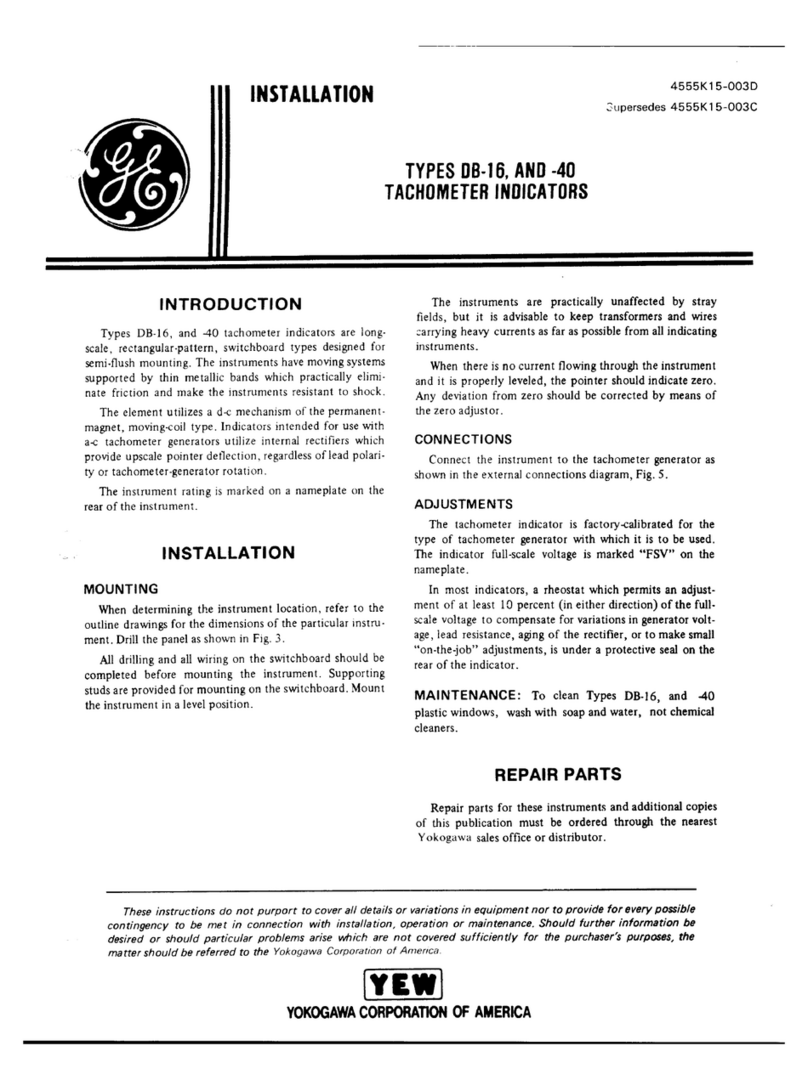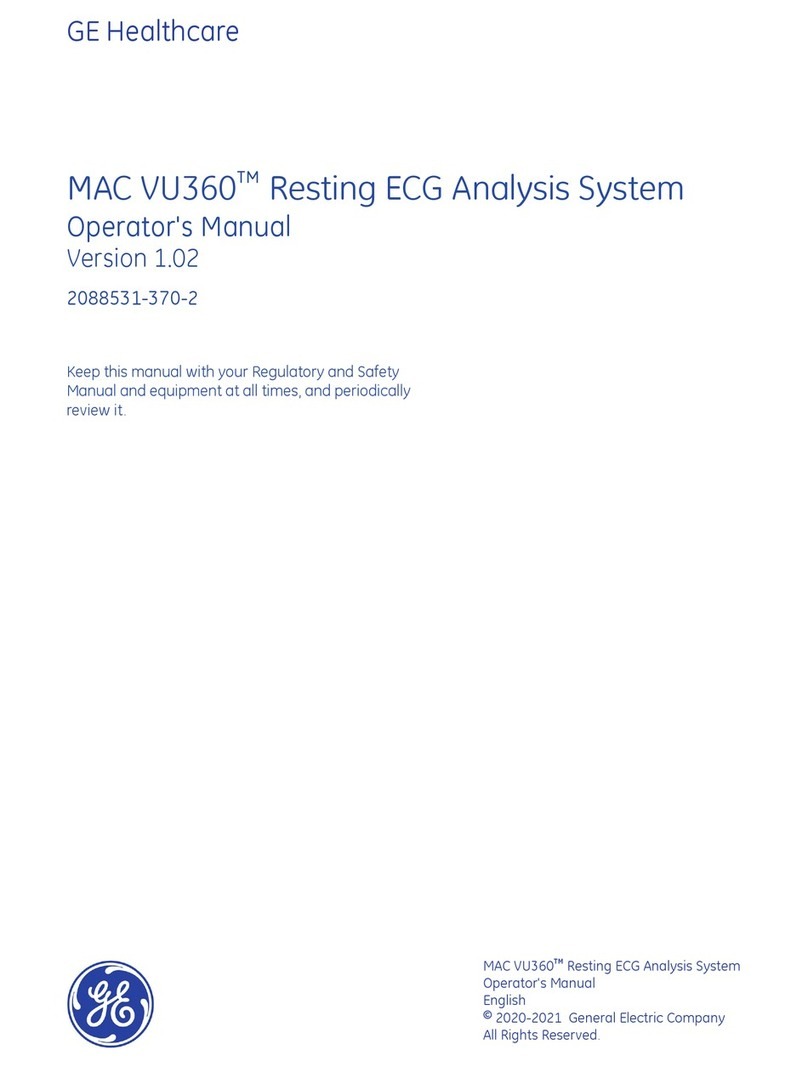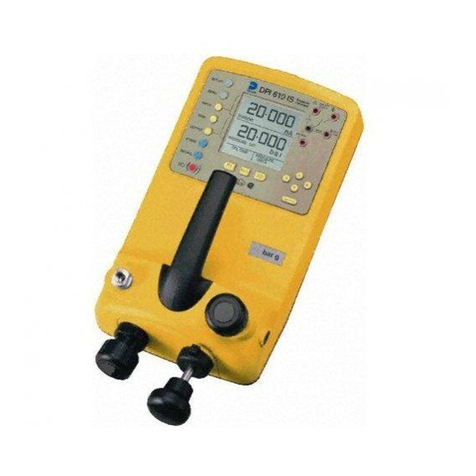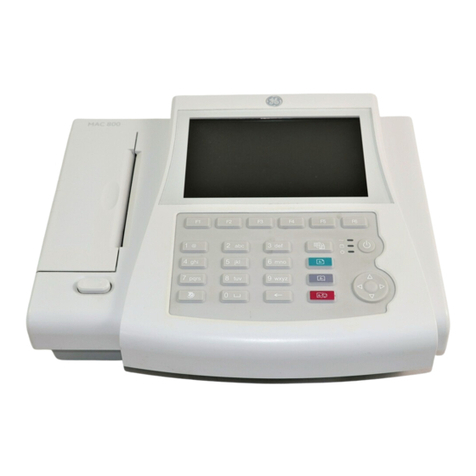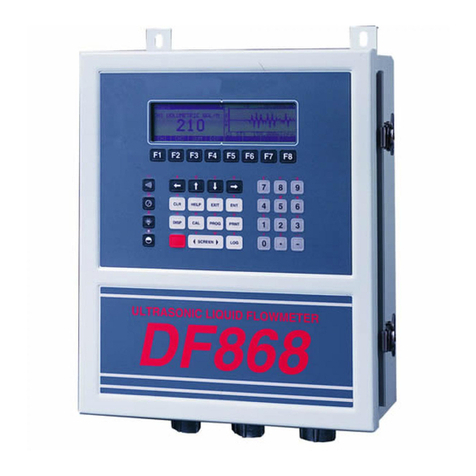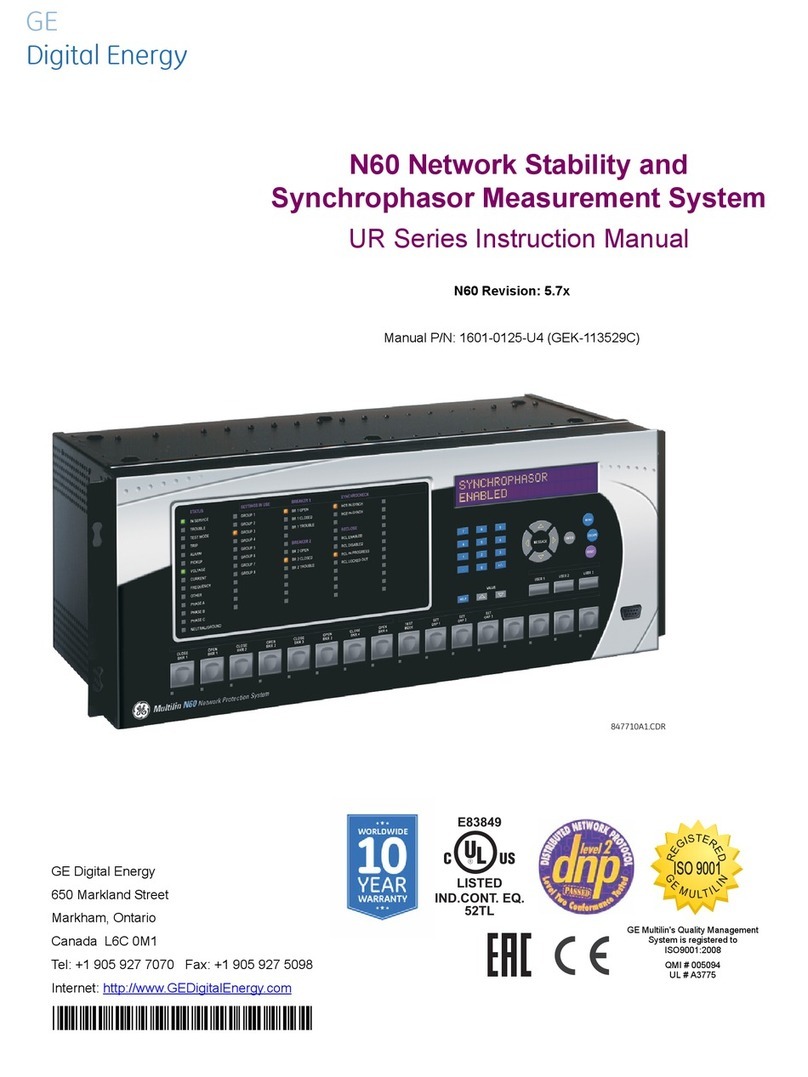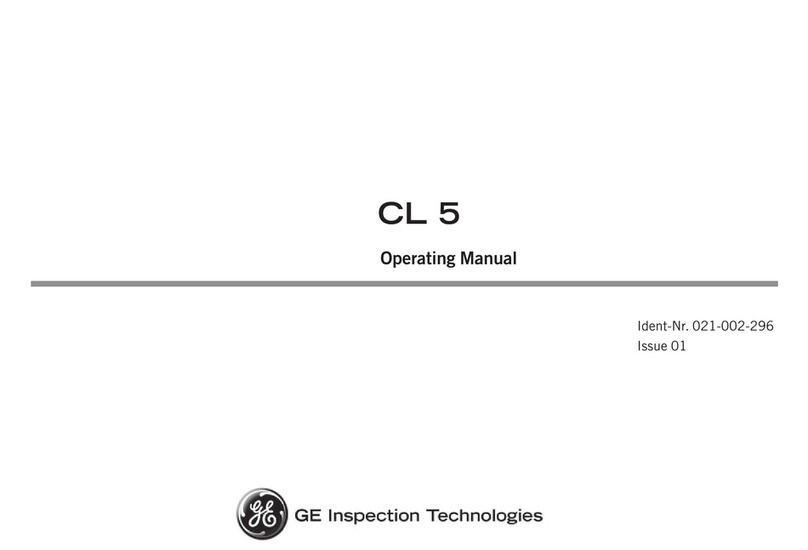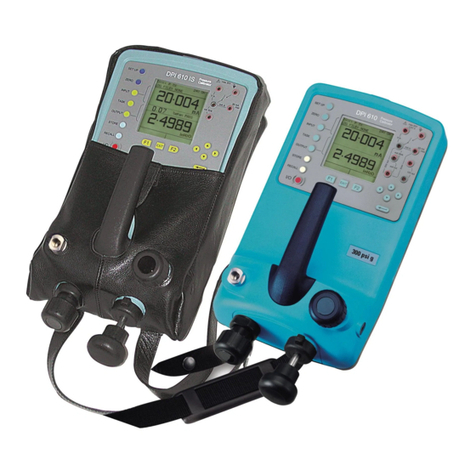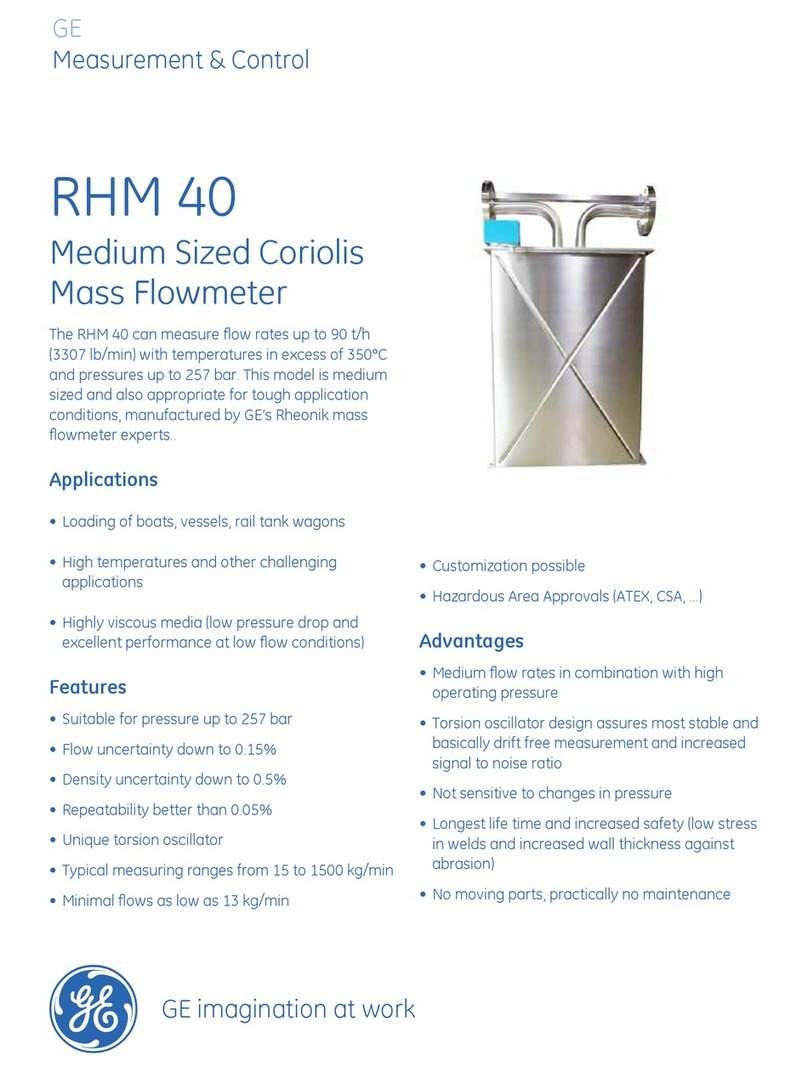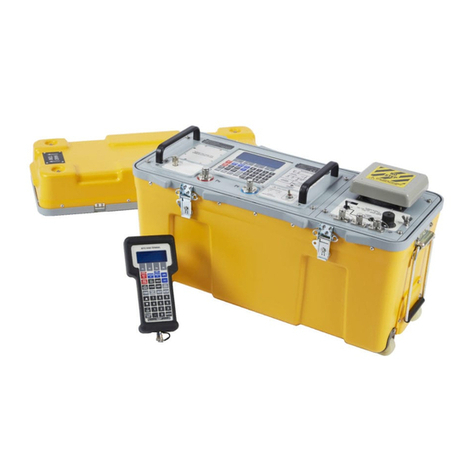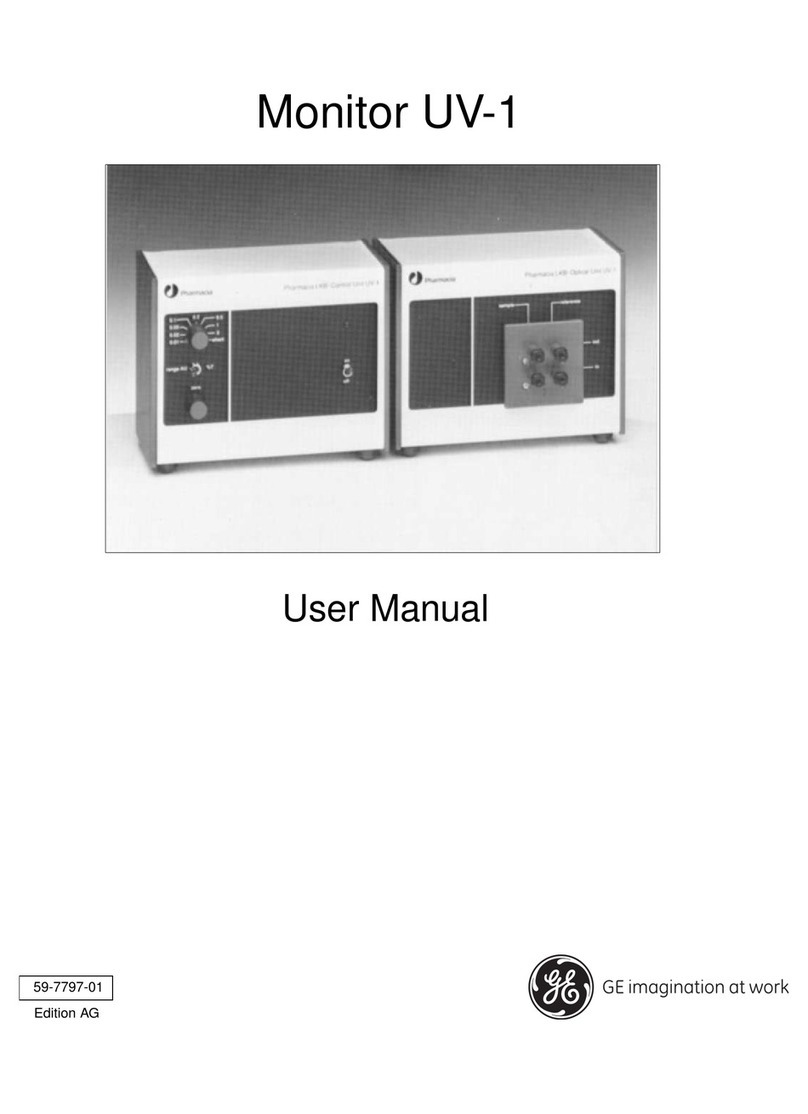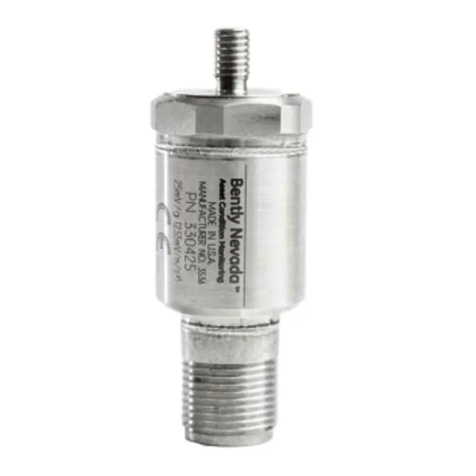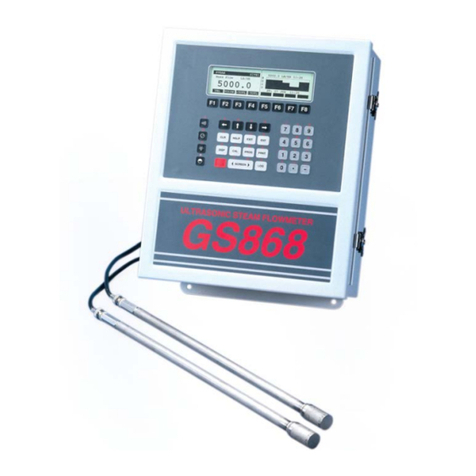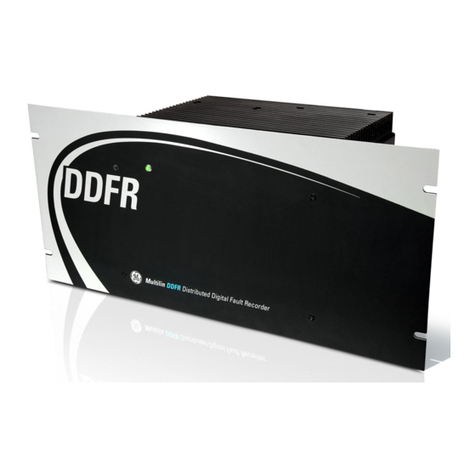
GE Multilin Sub Meters
1.2.2. The Keys
Operating the meter is easy using the five keys to take navigate through the Keypad Operations
Table. The Display Pages “expand” as you go right, much like the directory or Explorer “tree”
displayed on any computer. The display shows where you’re headed.
Table 1-5: The Keys
Right Key:
• Go forward into sub-parameter pages.
• During Edit Setup values, select next (right side) digit.
Left Key:
• The Opposite of the Right key.
• Go Back towards the Main Parameter Pages. Going Left past “Prog” requires Code
entry to enter Main Menu (Setup and Clear)
• During Edit Setup, selects previous (left side) digit
• Exits from Edit mode, back to the Main Menu.
Up Key:
• Scroll Up thru other Display Pages at the same level.
• Continuous pressing for 3 seconds initiates limited Auto-scroll (within the same
group of pages). Press any key to return to Manual scrolling.
• Increases the value of the blinking digit during Edit. Typically while changing the
Meter Setup settings.
Down Key:
• The Opposite of the Up key.
• Scroll Down thru other Display Pages at the same level, thru all functions.
• Continuous pressing for 3 seconds initiates the Full Auto-scroll mode, thru all
functions. Press any key to return to Manual scrolling.
• Decreases the value of the blinking digit during Edit.
TURBO Key:
• The TURBO key scrolls thru the following pages: RMS (Home page),
VLL, A,PF VLN,A,F VA, W, VAR W,VAR, PF PF1, PF2,PF3 , VAh and
Wh. This gives simple one-touch access to the most commonly used parameters,
even for unskilled operators. “One Touch” does not operate in the Setup (Program)
Mode.
• If you’re lost, the TURBO key is a quick way to get back to the RMS home
page.
• Continuous pressing for 3 seconds initiates Auto-scrolling through the above
Favorite pages.
The parameter name is displayed every 9
th
second for 2seconds, as well as the first time you press
a key.
At this point you can scroll to the next page you want to see. If you’re not sure which page
you’re watching, one press of any key will immediately identify the Name. The second key
press takes you to the next page.
The Meter Menus and Displays are organized as below. Navigating with the EPM 2000 is very
easy and intuitive. For full details, see the Keypad Operations Table. The left-most column
(RUN, CLR, SET) constitutes the “Main Menu”. Press the key in the direction you want to go.
Display shows where you’re headed.













